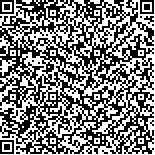| 摘要: |
| 2014—2016年, 为调查研究中国大辽河、涧河、闽江与九龙江河口潮间带表层沉积物中甲藻孢囊多样性, 开展了4个季度表层沉积物样品采集, 通过多钨酸钠法提取甲藻孢囊后进行鉴定, 共鉴定出43种(隶属16属)和5种未定种, 包括自养型17种和异养型26种。其中孟迪原多甲藻(Protoperidinium mendiolae), 脆弱海胆藻(Echinidinium delicatum)和透明海胆藻(E. transparantum)为我国沿海未报道的新记录种类。调查中发现了一种产麻痹性贝毒的塔玛亚历山大藻复合体(Alexandrium tamarense complex), 以及3种产虾夷扇贝毒素的甲藻孢囊, 分别为网纹原角藻(Protoceratium reticulatum), 多边舌甲藻(Lingulodinium polyedrum)和具刺膝沟藻(Gonyaulax spinifera)。甲藻孢囊丰度在4个河口的分布具有明显差异。大辽河口孢囊丰度最高, 变化范围为47~94 cysts/g DW(干质量); 其次为涧河口, 孢囊丰度变化范围为24~75 cysts/g DW; 闽江口与九龙江口孢囊丰度相对较低, 变化范围分别为14~50 cysts/g DW与5~50 cysts/g DW。与沉积物环境因素的相关性分析表明, 自养型孢囊丰度和孢囊总丰度均与河口盐度、间隙水总溶解态氮营养盐浓度、溶解无机氮浓度、氨氮浓度呈显著正相关关系; 多样性指数与盐度、沉积物粒度(<63 μm)呈显著正相关关系。该研究对于了解我国河口潮间带甲藻孢囊多样性以及形成机制具有重要参考价值。 |
| 关键词: 河口潮间带 甲藻孢囊 多样性 环境因子 |
| DOI:10.11759/hykx20230604001 |
| 分类号:X145; Q178.53 |
| 基金项目:科技基础性工作专项(2014FY210600);国家自然科学基金重点项目(42030402);山东省海洋局财政项目“海洋生态监测评价”(2023年) |
|
| Study on the diversity of dinoflagellate cysts in the four estuary intertidal zones of China |
|
LUO Fang1, WANG Yujue1, SHI Yajun2, HAN Qiuying3, GU Haifeng4, LIU Dongyan1
|
|
1.State Key Lab of Estuarine and Coastal Research, East China Normal University, Shanghai 200062, China;2.Yantai Institute of Coastal Zone Research, Chinese Academy of Sciences, Yantai 264003, China;3.Hainan Tropical Ocean University, Sanya 572022, China;4.Third Institute of Oceanography, Ministry of Natural Resources, Xiamen 361005, China
|
| Abstract: |
| Understanding the diversity and formation mechanisms of dinoflagellate cysts from an ecological perspective is important. In this study, we investigated the diversity of dinoflagellate cysts in the surface sediments of the intertidal zone of the Daliao River Estuary, Jian River Estuary, Minjiang River Estuary, and Jiulong River Estuary in China from 2014 to 2016. For this purpose, dinoflagellate cysts were extracted using the sodium polytungstate method from four-quarters of the surface sediment samples. Several dinoflagellate cysts spanning 43 species (belonging to 16 genera) and 5 unidentified species, including 17 autotrophic and 26 heterotrophic species, were identified. Among these species, Protoperidinium mendiolae, Echinidinium delicatum, and Echinidinium transparantum were reported for the first time in the coastal areas of China, and four toxic species, including paralytic shellfish poisoning-producing Alexandrium tamarense complex and three yessotoxin-producing species (Protoceratium reticulatum, Lingulodinium polyedrum, and Gonyaulax spinifera), were also detected. Significant differences were detected in the abundance of dinoflagellate cysts across the four estuaries. The highest values were found for the Daliao River Estuary at 47-94 cysts/g DW, followed by the Jian River Estuary at 24-75 cysts/g DW. The abundance of cysts in the estuaries of the Minjiang and Jiulong Rivers was relatively low at 14-50 and 5-50 cysts/g DW, respectively. Correlational analyses revealed that the abundance of autotrophic cysts and the total abundance of cysts were both significantly positively correlated with seawater salinity, total dissolved nitrogen concentration, dissolved inorganic nitrogen concentration, and ammonia nitrogen concentration in interstitial water, while the diversity index was significantly positively correlated with seawater salinity and sediment grain size (<63 μm). The findings of this study provide important references to our understanding of dinoflagellate cyst diversity and formation mechanisms in the estuary intertidal zones of China. |
| Key words: estuary intertidal zone dinoflagellate cysts diversity environmental factors |
